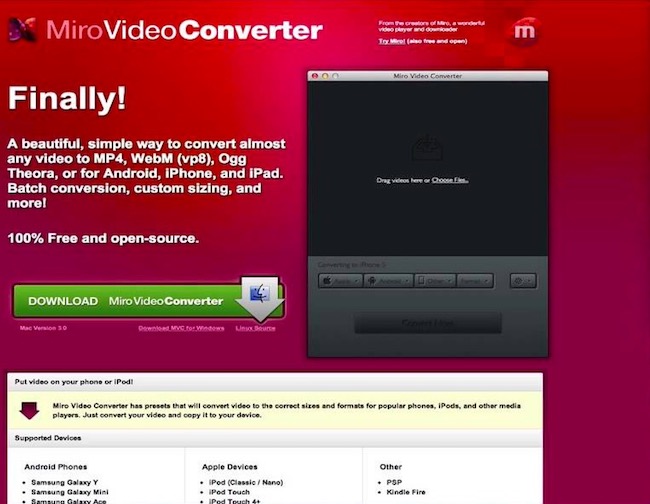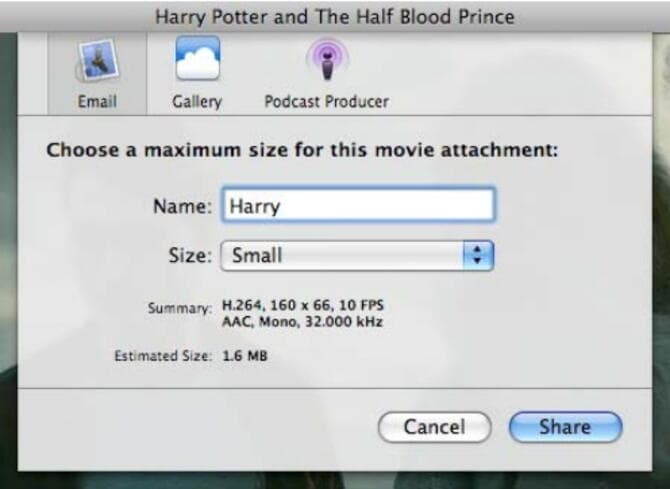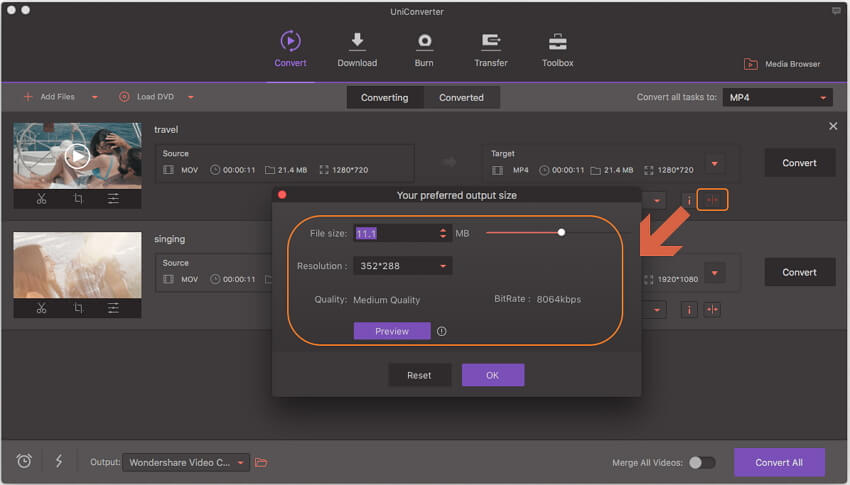UniConverter is the perfect solution for compressing video without losing. Compress video on and for any platform. Whether you’re compressing your videos on macbook air, windows 10, ipad, or any mobile device you can create videos that are compatible with imovie, vlc, quicktime, and more. VEED is the best online video compression service - super simple to use and compatible with all file formats. Best for: those looking for free, open-source MP4 video compression software for PC or Mac. While beginners should have no issues carrying out simple conversions, the more advanced features are probably best suited to those with some experience. For creating more space on your Mac, it's necessary to compress video on Mac using professional tools. The following part of the article discusses the top 10 video compressors for Mac free online and desktop with pros and cons. The easiest way to compress videos on Mac in batch and no quality loss. Video Compressor Mac free download - Video Compressor, Mac Video Downloader, YTD Video Downloader, and many more programs.
It's not a surprise that the largest files on your Mac are probably your videos. So, whether you're running out of space on your hard drive or you're trying to send a movie that's too large, compressing videos is a great way to reduce their file size. And with no shortage of options, figuring out where to start with it all can feel overwhelming.
But don't worry, if you keep reading, this article will explain video compression and how to compress a video on a Mac.
What is compression and how does it work?
Before you just compress all of your videos, it's important to understand what it is and what happens to a video when it's compressed.
Since a video is just a series of photos rapidly playing in succession, the process is actually very similar to compressing an image. Whatever data can be stripped out of each frame is taken away, making the overall file smaller.

Is it possible to compress videos without visible quality loss?
Compressing videos on Mac is a balancing act. Because even if you compress a video ever so slightly, there will still be some quality loss. It's all about finding how much you can compress it to reduce the file size without noticing that the video is actually of lower quality.
Clean up duplicate videos to save space
It’s easy to accidentally end up with duplicate videos on your Mac. Those duplicates don’t do anything except clutter your hard drive and waste space. Thankfully, you can use an app like Gemini 2 to scan your entire hard drive for duplicate videos and help you quickly remove them.
It’s so simple and straightforward, all you need to do is follow these three steps:
- Download and install Gemini 2 on your Mac.
- Open Gemini 2.
- Click + > Home folder > Scan for duplicates.
Then, when the scan is finished running, you can click Smart Cleanup to let Gemini’s algorithm decide which files to keep. Or, you can click Review Results to view the files for yourself.
How to compress videos with iMovie
One of the most popular ways to compress your videos is with the iMovie app. It comes standard with macOS, but if for some reason it's not on your computer, you can download it from the Mac App Store.
After you've found iMovie in your Applications folder or re-downloaded it, follow these steps to compress a video.
- Open iMovie.
- Click Create New > Movie.
- Then, click File > Import and select the video you want to compress.
- Your video will appear in the browser window. Drag it into the timeline window.
- Click File > Share > File…
- Choose your export settings. Adjusting the Resolution and Quality will have the most impact on your file size, but you can also set the Compress dropdown to Faster. Now, click Next.
- Name your video and choose where you want to save it. Hit Save.
How to compress videos with Quicktime Player
Another default macOS app you can use to compress your videos is Quicktime Player. Because Quicktime's primary use is to playback videos, people often forget that it has some basic editing tools built-in as well. Here's how you use Quicktime to compress your video files:
- Open Quicktime Player.
- A popup should appear asking you to select your video. If it doesn't, click File > Open File.
- Then, click File > Export As…
- You'll see a list of video resolutions. Choose the next lowest resolution.
- Name your video and choose a location to save it.
Tip: If you don't know your video's original resolution, you can find out by clicking Window > Movie Inspector.
Best free video compressors
While Apple's default apps are great and easy-to-use, they do leave very little room for control over your compression settings. So if you want to adjust your compressions a little more, take a more in-depth look at the apps Handbrake and Clideo.
Handbrake
Arguably the most popular compressor, Handbrake has been around for years. And it's popular for a reason. It's a simple, free video compressor for a Mac. Once you have Handbrake downloaded and installed in your Applications folder, you can follow these steps to compress a video:
- Open Handbrake.
- In the popup window, navigate to your video and click Open.
- At the top, you can choose from one of the Presets in the dropdown menu, or you can make your adjustments in the tabs above your video.
- Then, you can rename your video and select where you want to save it at the bottom of the window.
- After you've adjusted all of your settings, click the Start button at the top.
Clideo
Another option you have is the free online compressor, Clideo. As long as the video you want to compress is already under 500 MB, you can upload it using your browser, and Clideo will do the rest. And the best part is there's no software to install. Here's how you compress your videos with Clideo:
- In your browser, go to Clideo.com.
- Click Compress > Choose file and select the video you want to compress.
- Preview the video and if you want to make any adjustments, click Edit result.
- When you're happy with the quality of the video, click Download.
Free Convert
Browser-based converters—like Free Convert—make it really easy to compress your videos because there’s no app you need to install. The brightside about Free Convert is that you can upload videos up to 1 GB. But the downside is that although you get a little more control over the conversion settings, it does tend to compress your video a little more Meaning you’ll probably notice some of the compression in the video quality.
Using Free Convert is so simple, just follow these steps:
- In your browser, go to FreeConvert.com.
- Click Choose Files > Select the File > Upload.
- Adjust your Output settings.
- Then, click Compress Now!
Compressing your videos is a great way to save space on your Mac’s internal hard drive. But, cleaning up the clutter on your computer is also a surefire way to free up storage. That’s why it’s a good idea to get into the habit of regularly checking for duplicate files. Not just videos either, but all types of files. And that’s where Gemini 2 can really help you out. Since it makes it so simple to scan your hard drive and quickly remove the similar and duplicate files it finds.
While it might feel like a daunting task at first, reducing video file size on Mac doesn’t have to be scary. And the good news is you have a couple of different options. Whether you decide to use one of the default apps or one of these free tools, hopefully, you're feeling confident in compressing your videos on Mac after reading this article.
There must be many situations where you need to compress a video on Mac.
- You want to share a video with friends via email or social media, but its size exceeds the limit.
- You need to playback some large UHD videos, but find it plays extremely laggy on Mac.
- Large amounts of video files almost run out the Mac storage.
- and so on.
This free MP4 compressor consists of an extensive list of output selections including MP4, AVI, MPG, WMV, ROM and several other formats. It allows you to compress your MP4 video file to formats which are compatible with a wide range of multimedia devices and software like your PC or Mac. A powerful new Metal engine takes advantage of the CPUs, GPUs, and memory in your Mac for high-performance encoding of high-resolution video. Compressor also leverages available hardware encoders for H.264 and HEVC exports, spreads work across multiple CPU cores, and uses the high-speed GPU on the graphics card to speed up demanding image processing tasks.
But the real question is how to compress a video on Mac on earth? Most importantly, how to make videos files smaller on Mac while retaining its original picture quality as much as possible. Don't worry, because this is just what this tutorial focuses on. Keep reading to learn 3 different ways to compress video files on Mac without sacrificing picture quality.
How to Compress a Video on Mac without Qulaity Loss - The Easiest and Fastest Method
Free Online Video Compressor For Mac
VideoProc is a one-stop video processing software application. It can compress, convert, record, and edit 4K UHD videos, DVDs and music easily at GPU fully accelerated speed on Mac and Windows. This handy video compression software on Mac comes with an extremely straightforward interface that enables you to easily compress videos in batch or separately within a simple move of your mouse.
Why Should you Use VideoProc to Compress a Video on Mac?
- Smaller in size but higher in quality. While saving the memory space, VideoProc also contrives to minimize the loss of the image quality to the least standard. It even makes it possible to compress a video by 90% without lossing it's quality.
- Fast in speed. VideoProc takes advantage of the full-GPU accelerated tech to deliver up to 47 times faster compression speed than the real-time playback. It works smoothly even on an out-of-date Machine.
- Diverse in format. It supports for hundreds of different video or audio formats. All common resolutions are supported, including 8K 4320P, 4K 2160P and HD 1080P and etc. More than 80 input video formats like AVI, FLV, MP4, DVDs, and some other formats are supported.
- Multitask. VideoProc supports to import more than one video at a time. And it holds the ability to manage all these videos at the same time. Thus make this decent Video compressor on Mac super handy to use.

How to Compress a Video on Mac Using VideoProc?
1. Import the video.
Go to the official site and free download VideoProc on your MacOS, and then install it. Launch it up, click the +Video or +Video Folder button to import a video or multiple videos. You can also directly drag the videos to the app.
2. Set the compression parameter.
Short of time? You can hit on Target Format, select MP4 HEVC, and click on Run to active VideoProc compress your video file on Mac. From our test, it is possible to compress the video size by over 90%. With the support of GPU acceleration, the whole process costs only minutes. Plus, VideoProc can retain the original picture quality thanks to the application of the x265 high entropy codec algorithm.
Assume you want to take full control over the parameters of VideoProc, click the Codec option on the top right corner of the page, and there you can get 6 methods to compress the video:
- Move the quality slider to left.
- Chang the video codec to HEVC.
- Set up a lower resolution.
- Decrease the frame rate.
- Enter a lower Bit Rate value.
- Enlarge the value of GOP.
Bonus: You can also resize the file by cropping, trimming, splitting or cutting a video on mac.
3. Start the compression of video on mac.
After setting all those parameters, click the RUN button to start compressing a video on Mac.
How to Compress a Video on Mac Using iMovie?
If you've ever used this build-in editing software on Mac, you probably wondered at some times, 'Is it possible to compress my video with iMovie?'. Yes, Absolutely. iMovie is typically developed for making simple video edits, but it can also be utilized to compress videos on Mac.
iMovie compresses your video on mac with the help of CPU only. iMovie might burst up the CPU usage rate to 80% or even higher. Thus means, during the long compression process, it's barely possible to launch up another program.
Step 1. Launch up iMovie on your Mac. Drag and drop the video files that you'd like to compress to iMovie. Alternatively, you come to its top menu bar, find out File, and click this. Hit Import Media to add source videos to iMovie.
Step 2. Once the video is successfully loaded to the video editing screen, you click on File and choose Share. You now obtain a few different ways to share videos, but what you should pick is Export File.
Free Video Compressor For Windows
Free Video Compression For Mac
Step 3. The small new window displays the duration, file size, description, tags, format, resolution, quality information of the chosen video. To shrink a video size, you can:
- Reduce the resolution: Hit the down-triangle button next to Resolution to select a lower resolution.
- Select a lower quality: Tap the down-triangle button next to Quality, and pick up the proper one.
- Set the Compress mode as Faster.
Note: Though a low resolution, quality grade, and fast compression speed refers to smaller video file size, these can bring visible quality loss. Thus, don't let the resolution go lower than 720P, or set Low as the quality grade.
Video File Compressor For Mac
4. Hit on Next as soon as you have made up proper settings. On the new panel, you can change the export file name, and it's output folder if necessary. After that, click on Save.
How to Compress a Video on QuickTime Player?
QuickTime Player, as its name implies, servers as a multiple media player to play videos in various formats on your Mac. However, it is also capable of compressing your videos. Unlike VideoProc that allows you to compress a video by changing video formats, bitrate, and other properties, QuickTime doesn't leave you much room to adjust the output video size. This built-in program on Mac only allows you to shrink the video by exporting the original video at a lower resolution. How about the picture quality of the yield out video? Unfortunately, visible quality loss is hard to avoid.
The range of QuickTime supports formats is very limited. In most cases, it only enables you to compress videos that are in MPEG-2/4 or H.264 codec without a/v out-of-sync or black screen errors.

Best Video Compressor For Pc
Step 1. Open up QuickTime on your Mac to enter the main interface. Hit File > Import to load the original video to this program.
Step 2. Hit File > Export As to obtain the 5 common resolution options, 4K, 1080P, 720P, 480P, and audio only. Suppose the original video files are in 4K, there you're advised to select 1080P or 720p.
Video Compress For Mac
Step 3. Suppose you choose the 4K or 1080P, we suggest you choose HEVC as the video file format by checking the HEVC option. If you select iPad, iPhone, iPod touch, and Apple TV…, you'll be lead to the Save your movie panel. Pick up the devices that will be utilized for watching the video, and then click on Save.
Video Compressor For Mac Free Download
Step 4. Enter the name for the compressed video file, assign the destination file folder for holding the final video, and hit Save to let QuickTime Player starts to compress the video on Mac.
